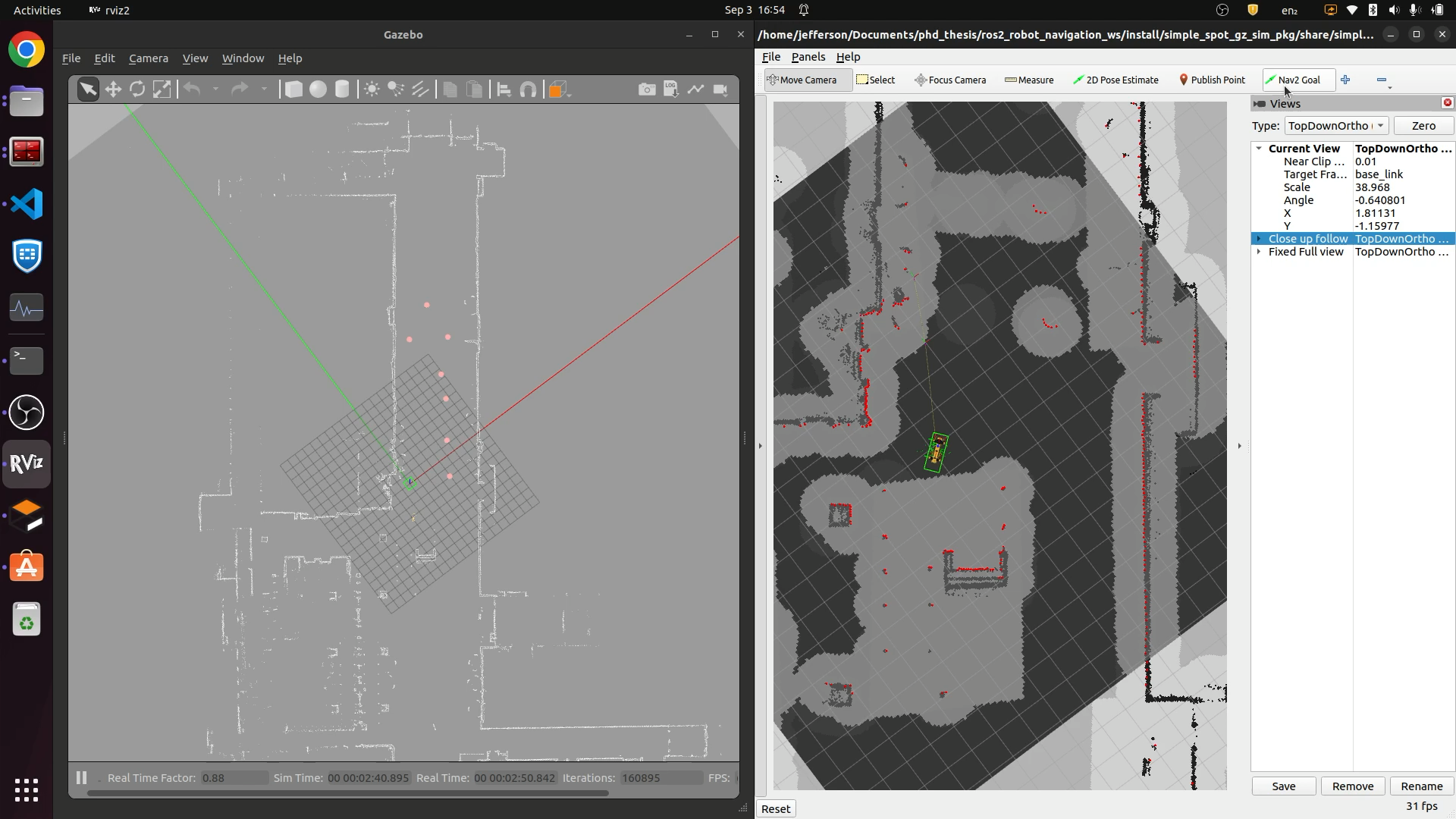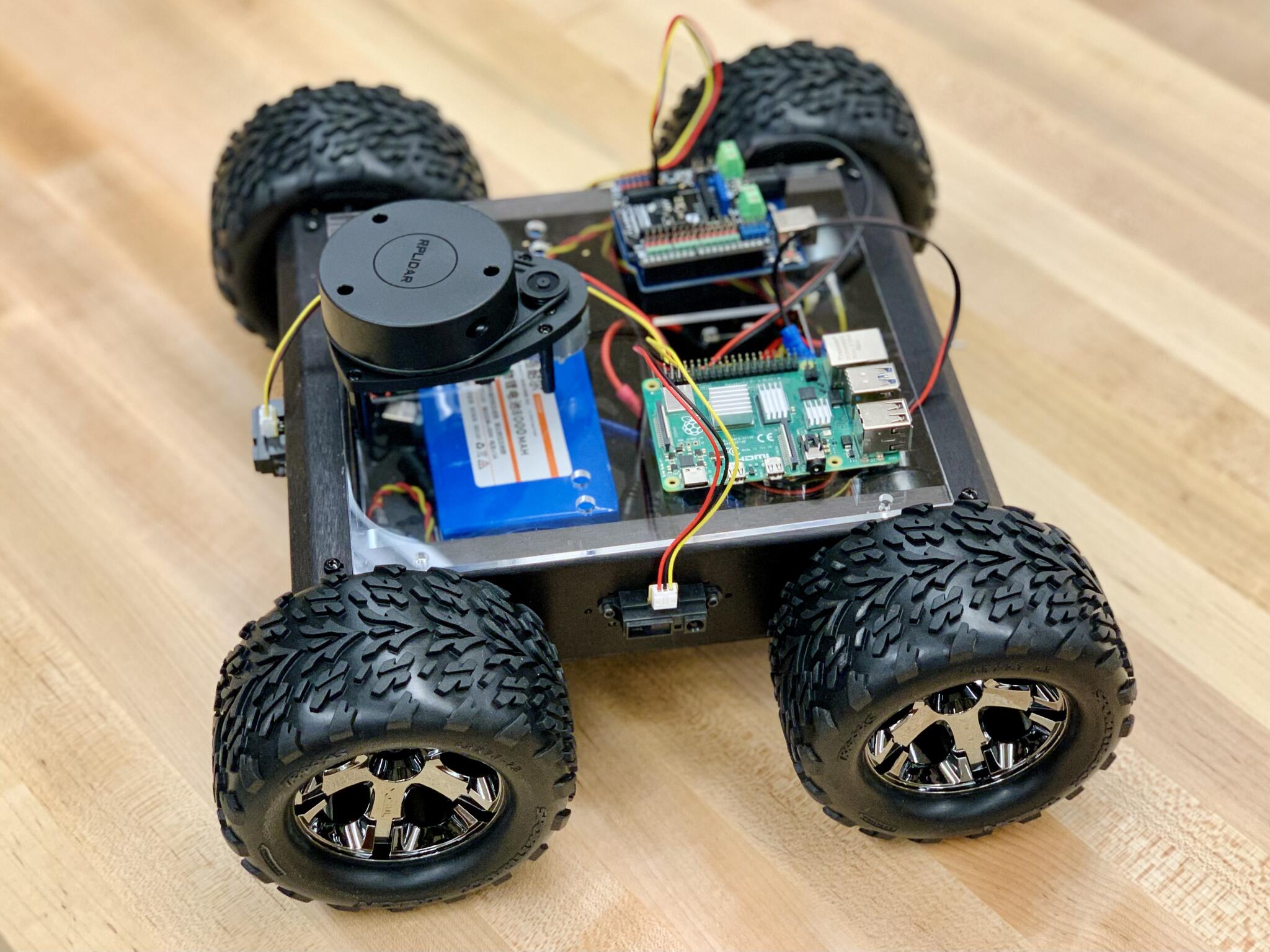Explore our tips for technical writing, GitHub code and learning resources, free preprint downloads, social media posts and videos, as well as the educational programs and courses affiliated with Offroad Robotics researchers.
Courses
Offroad Robotics researchers are active in teaching courses at Smith Engineering.
Autonomous Mobile Robotics
This course will be offered during Fall 2025.
ELEC 446 Autonomous Mobile Robotics is a new senior undergraduate elective course on mobile robotics, developed for the Mechatronics & Robotics Engineering program at Smith Engineering. From self-driving cars, robot vacuums and lawnmowers, to autonomous mining, construction, and agricultural vehicles, applications for mobile robots are widespread. This course provides students with an introduction to the fundamental tools and techniques of mobile robotics with a focus on wheeled robots. Specific topics include a review of rudimentary robot modelling (kinematics and dynamics), control systems design for trajectory tracking, sensing and perception methods, state estimation for navigation, localization, and mapping (SLAM), as well as the basic elements of motion planning. Computer-based simulations (Python) are employed in tutorials and assignments to help students develop a practical understanding of the course topics.

Prerequisites and Corequisites
See the official academic calendar entry for more details.
- Student must have taken a signals and systems course (e.g., MREN 223 or ELEC 224 at Queen's) and must have taken or be currently taking an upper-year control systems course (e.g., MECH 350 or ELEC 443 at Queen's).
- Students should be comfortable with (vector) calculus and linear algebra, as well as have a strong grasp of the fundamentals of probability and statistics.
- It is assumed that students are proficient in basic programming in Python, MATLAB, Julia, or some similar language for numerical computing.
Course Syllabus
This syllabus is subject to change depending on timing throughout the term.
| Week | Lecture and Tutorial Topics |
|---|---|
| 1 | Introduction to mobile robotics |
| 2 | Review of linear systems and control |
| 3 | Modelling of wheeled mobile robots |
| 4 | Controllability |
| 5 | Control by approximate linearization |
| 6 | Model predictive control |
| 7 | Mobile robot sensors and perception |
| 8 | Linear observers and observability |
| 9 | Introduction to robot localization |
| 10 | Least-squares estimation |
| 11 | Kalman filtering for robot localization |
| 12 | SLAM + course review |
The grading scheme for this course includes assignments, quizzes (in-class), and a final exam (during the exam period).
Past Guest Lectures
Dr. Marc Gallant, Avidbots
Check out this link on LinkedIn.
Dr. Rob Hewitt, Torc Robotics (formerly with NASA JPL)
Mechatronics & Robotics Design IV
This course is offered jointly by Joshua Marshall and Matthew Robertson in FW2025-26.
MREN 403 Mechatronics & Robotics Design IV is the capstone project course for the Mechatronics & Robotics Engineering program at Queen's University. In this course, students culminate their learning of mechatronics and robotics, and engineering design, through a team-based capstone design project focused on solving a real-world, industry-level technical challenge, which includes a detailed design phase, as well as robust building and iterative design testing. The course is conducted over two terms. In addition to the design, build and testing of a mechatronics or robotics system, each team is required to demonstrate communication, teamwork, and management skills at a professional level by preparing a formal design proposal, which includes a project management plan, providing regular progress reports, and submitting a final design report, together with a formal presentation on the project and its results. Elements of professionalism and ethics are addressed.
Autonomous Vehicle Control & Navigation
ELEC 845 will not be offered during the 2025-26 academic year.
ELEC 845 Autonomous Vehicle Control & Navigation introduces graduate-level engineering students to the fundamentals of autonomous vehicle control, localization, and mapping. This course focuses on those tasks usually carried out by autonomy engineers, including sensor selection, applied control (e.g., trajectory and path following) and navigation techniques for autonomous vehicles that operate in real environments (e.g., construction, warehouses, roadways, mining, etc.). Although the focus in this course is on ground vehicles, the presented methods are also applicable more broadly. The audience is engineers from all relevant engineering and applied science disciplines who have an interest in mobile robotics, applied control and estimation, and robotic vehicle applications. The audience is graduate students from all relevant engineering and applied science disciplines who have an interest in mobile robotics, applied control and estimation, and robotic vehicle applications.
Prerequisites
- It is strongly recommended that students have taken at least one undergraduate course in control systems engineering (e.g., at Queen’s, MECH 350, ELEC 443, MTHE 332, or something similar from elsewhere).
- Students should be comfortable with (vector) calculus and linear algebra, as well as have a strong grasp of the fundamentals of probability and statistics.
- It is assumed that students are proficient in basic programming in Python, MATLAB, Julia, or some similar language for numerical computing.
About the Course
This is a 12-week graduate course that involves both lectures and regular hands-on activities where computer simulation is used to apply and experiment with introduced techniques and algorithms. Students are also expected to complete and present a significant independent project. The grading scheme comprises 30 % (two assignments), 30 % independent project, 40 % final exam
Mechatronics & Robotics Design II
MREN 203 Mechatronics & Robotics Design II was originally developed by Joshua Marshall in 2022-23 to provide second year engineering students in the Mechatronics & Robotics Engineering program at Smith Engineering with an introduction to engineering design, focusing on robotic and mechatronic systems. The first part of this course covers formal systems engineering design techniques, problem definition, creative idea generation, and decision-making considering economic, societal, and environmental factors. Students engage in workshops to develop technical skills and work with a physical robot system. The second part involves a prototype-based final design project with both hardware and software components, providing hands-on experience in the engineering design-build-test-fail cycle. Emphasis is placed on developing engineering writing and speaking skills, including professional correspondence, reports, oral briefings, and presentations. In the context of robotic systems engineering, the course delves into professional practices, including engineering codes, standards, and ethics, while exploring the interplay between environmental factors and human activities.

Course Syllabus
MREN 203 is a 12-week introduction to robotic systems engineering design. The course covers the following topics (by week).
| Week | Lecture and Tutorial Topics |
|---|---|
| 1 | Introduction to robotic systems engineering |
| 2 | Elements of robot modelling and control |
| 3 | Control, systems design and requirements |
| 4 | Professional practice and teamwork |
| 5 | Tools and techniques for technical communications |
| 6 | Project evaluation and cost estimation |
| 7 | Robotics and sustainable development |
| 8 | System reliability and risk analysis |
| 9 | Regulations, codes and standards in robotics engineering |
| 10 | Ethically aligned design in robotics |
| 11 | Intellectual responsibility |
| 12 | Trends and careers in robotics and automation |
Mining Systems, Automation & Robotics
This course has been discontinued.
MINE 472 Mining Systems, Automation & Robotics was an online course developed by Joshua Marshall, Scott Nokleby, and Heshan Fernando, which was offered at Queen’s University from 2015-2020. Its development was originally funded by the Ontario Online initiative and developed in partnership with the Engineering Teaching & Learning Team at Smith Engineering.
Overview
In order to address issues related to safety, productivity, and remote operations, the world’s mineral resources industry has been gradually shifting towards the increased use of automated systems and robotically-enhanced machines. It is important, therefore, that graduate engineers understand how these new technologies work so as to improve and make best use of them.
This online course introduces senior students to the fundamental tools and techniques of automation and robotics as applied to modern mining practice. It provides an introduction to the basics of systems control, examples of how methods of automatic control can be applied to mining equipment and associated industrial vehicles, as well as to the fundamentals of sensing and navigation as applied to the design of robotic mobile equipment.

Enrolment
MINE 472 was a fourth-year technical elective at Smith Engineering from 2015-2020. Enrolment was open to students from a range of engineering disciplines, to students from universities other than Queen’s, and even to industry professionals.